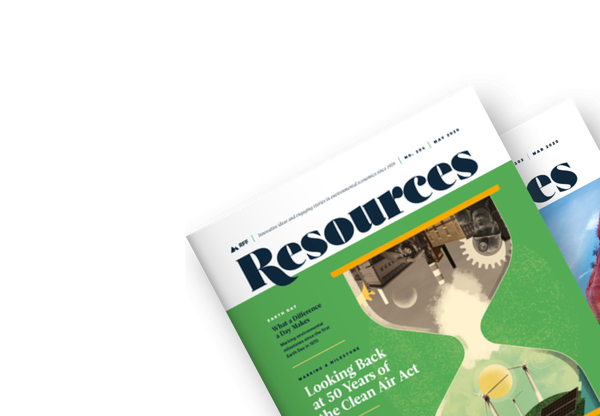
January 1994 / Magazine Issues
Issue 114: Reauthorizing Environmental Legislation: Issues and Impact
Several of this nation's environmental laws are now or soon will be up for reauthorization; not coincidentally, as the reauthorization debates heat up, researchers at RFF have been closely studying the laws and their impacts.
Superfund is currently getting the lion's share of public attention. In this issue, Kate Probst and Paul Portney explain in direct, unencumbered style the basic features of the statute as it now stands, as well as the sorts of changes that various groups are seeking to make. To provide this overview, they draw on four years' worth of research and policy analysis at RFF regarding Superfund, including a major report in 1992 on the liability standards in the statute and the pros and cons of changing them, as well as a book now in press on the economic impacts associated with the law.
Jim Boyd and Molly Macauley look at one specific issue regarding Superfund—the possible effects of Superfund liability on the redevelopment of older, often abandoned downtown industrial sites. Recognizing that many factors (including crime, high tax burdens, and the growth of exurban markets) militate against inner city redevelopment, they identify a number of measures that can be taken to blunt any possible Superfund disincentives.
The nation's basic pesticide law, the Federal Insecticide, Fungicide, and Rodenticide Act (FIFRA), is also up for reauthorization. A major issue in this debate concerns the law's requirement that the U.S. Environmental Protection Agency (EPA) balance the possible health risks associated with pesticide use against their economic benefits. John Antic and Prabhu Pingali describe the health risks and productivity benefits arising from the use of pesticides in rice production in the Philippines.
Encouragements or prohibitions on balancing aside, what do regulators really do when setting standards? Using data they collected on EPA's regulatory decisions concerning asbestos, pesticides, and hazardous air pollutants, Maureen Cropper and George Van Houtven attempt to determine statistically whether EPA appeared to balance benefits and costs in these three areas of regulation. In addition, they seek to determine what value EPA was implicitly placing on avoiding a given cancer case. Their findings on both counts are surprising.
Make no mistake about it: RFF research is often technical. But, as these articles show, this research is, more often than not, of direct relevance to important policy problems. In "Inside RFF," we describe some of our outreach activities, where RFF researchers help others make better policy decisions, both domestically and internationally. In this issue, Mike Toman reflects on a recent trip he and other RFF researchers made to Ukraine and Russia, a trip supported in part by a grant from the Trust for Mutual Understanding.
We are grateful to the growing number of individuals and organizations whose financial contributions help make RFF's research, policy analysis, and outreach activities possible.
— Robert W. Fri, President

